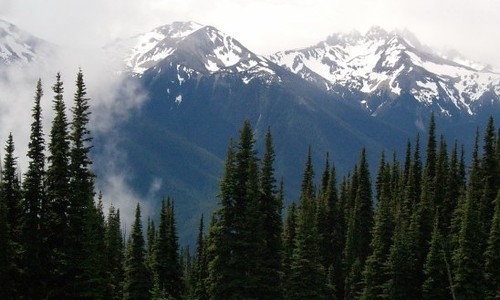
The Olympic Experimental State Forest is the largest site in the U.S. Forest Service’s national network of experimental forests and it’s the only representative of the Olympic Peninsula’s temperate rain forest ecosystem, which is known for its extreme rainfall and growth rates.
Its large size, encompassing 270,000 acres, and history of innovation make this a forest that offers many opportunities for research and monitoring.
As a cooperating experimental forest, this vast expanse of land is managed by the Washington Department of Natural Resources as a working forest, with the U.S. Forest Service coordinating research there.
The Olympic averages an incredible 140 inches of rainfall annually. Strong winds from the Pacific Ocean are a major and persistent natural disturbance. With such heavy precipitation and steep terrain, streams fill with erosion material and have the potential for unstable channel banks and upslope slides, creating challenges for scientists.
Conservation management strategies for the forest focus on restoration and maintenance of habitats that support salmonids, the northern spotted owl and marbled murrelets. The habitat conservation strategies for the Olympic are based on an experimental concept of an unzoned forest—that is, a landscape without specific areas set aside for timber management.
Old-growth forests that once dominated the landscape still grow on some state trust lands in the Olympic as well as in the adjacent Olympic National Park and Olympic National Forest.
Because the area is characterized by a very high rate of tree growth, the Olympic was designated to test innovative approaches to integrate conservation and commodity production of trees.
